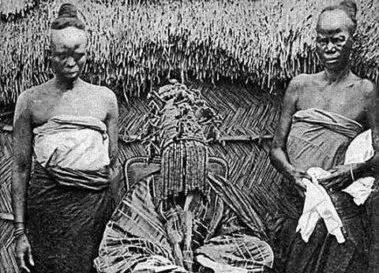Traditional male monarchs are very common in Nigeria and Africa as a whole. They’re well-known figures in their communities, and depending on the monarch, they may even be well-known internationally. In Nigeria, though, female rulers are nearly unheard of. Frequently, they are either spouses or heads of women’s groups who are in charge of ‘domestic affairs.’ This reflects the patriarchal nature of the country’s affairs, as well as regulations prohibiting women from holding such positions in their communities.
In recent times, women’s groups are beginning to raise their voices on the need to include women in the decision-making processes in the state at all levels. And in the clamor for a constitutional amendment that allows women to rule, there are women in the past who took the leadership role and those who have advocated for women’s rights. Examples of these women include; Efunsetan Aniwura, Funmilayo Kuti, and Mrs. Soyinka, among others.
When it comes to female leadership in traditional societies, Orompoto is one of the most common outliers. As the first and only female Alaafin of Oyo, Orompoto, or Orompotoniyun, as she is more generally known, made history. The Yoruba people’s remarkable organizational and administrative skills propelled the Oyo Empire to prominence as one of West Africa’s most powerful empires. Between the years 1554 and 1562, Orompoto was the ruler of the Oyo Empire. She was the granddaughter of Alaafin Onigbogi and the daughter of Alaafin Ofinran, both of whom were rulers of the Empire at the time.
Who is Orompotoniyun?
Oba Orompoto was the seventh Alaafin of Oyo. Because there was no male heir in the royal line at the time and the available males were too young, Orompoto ascended to the throne.
When her father died, her brother, Prince Eguguoju, succeeded him as the next in line to the throne. He died in his youth, though, without a male heir. Her younger brothers, Prince Ajiboyede and Prince Tella were too young to ascend the kingdom at the time. As a result, Orompoto would step down from her role as regent (which she had played a key part in driving the Nupe from Oyo after a protracted fight in 1555) to take the throne. The council of chiefs objected to this decision because the kingdom had never had a female monarch before.
The chiefs and elders had begun formulating plans for who would be installed as the Oyo Empire’s next monarch. Orompoto became increasingly adamant with each plan they devised, insisting that she was the dynasty’s only link and that she had to sit on the throne. Princess Orompoto gathered the chiefs to discuss plans for her coronation but received the same callous response. She then demanded to show the elders and chiefs that she was a man, as this was the only thing standing in the way of her coronation. The chiefs
decided it would be an excellent way to mock her, so they urged her to demonstrate her masculinity within seven days by stripping naked in front of the palace.

How Orompoto became the Alaafin
Earlier, before the coronation, Princess Orompoto began wearing male apparel, and on the D-day, she mounted the podium and removed her cap, revealing her short hair. She even went so far as to reveal her chest, but the elders were unimpressed. According to history, the chiefs not only observed a penis but also a drooping scrotum sack with two scrotum eggs in it when she finally lowered her trousers. Everyone prostrated themselves at that point, and she was enthroned as Alaafin Orompotoniyun. Orompotoniyun became known as Ajiun, the keeper of the vagina that thwarts wicked schemes.
Orompoto became Alaafin of Oyo and was said to be an expert horsewoman who established a specialized order of cavalry commanders within her army who were subservient to the Eso Ikoyi. She was also regarded as a skilled warrior who stood out during the battle of Illayi. She is claimed to have died in battle, making her one of the few Alaafins to do so, and she became the first transgender in history.





